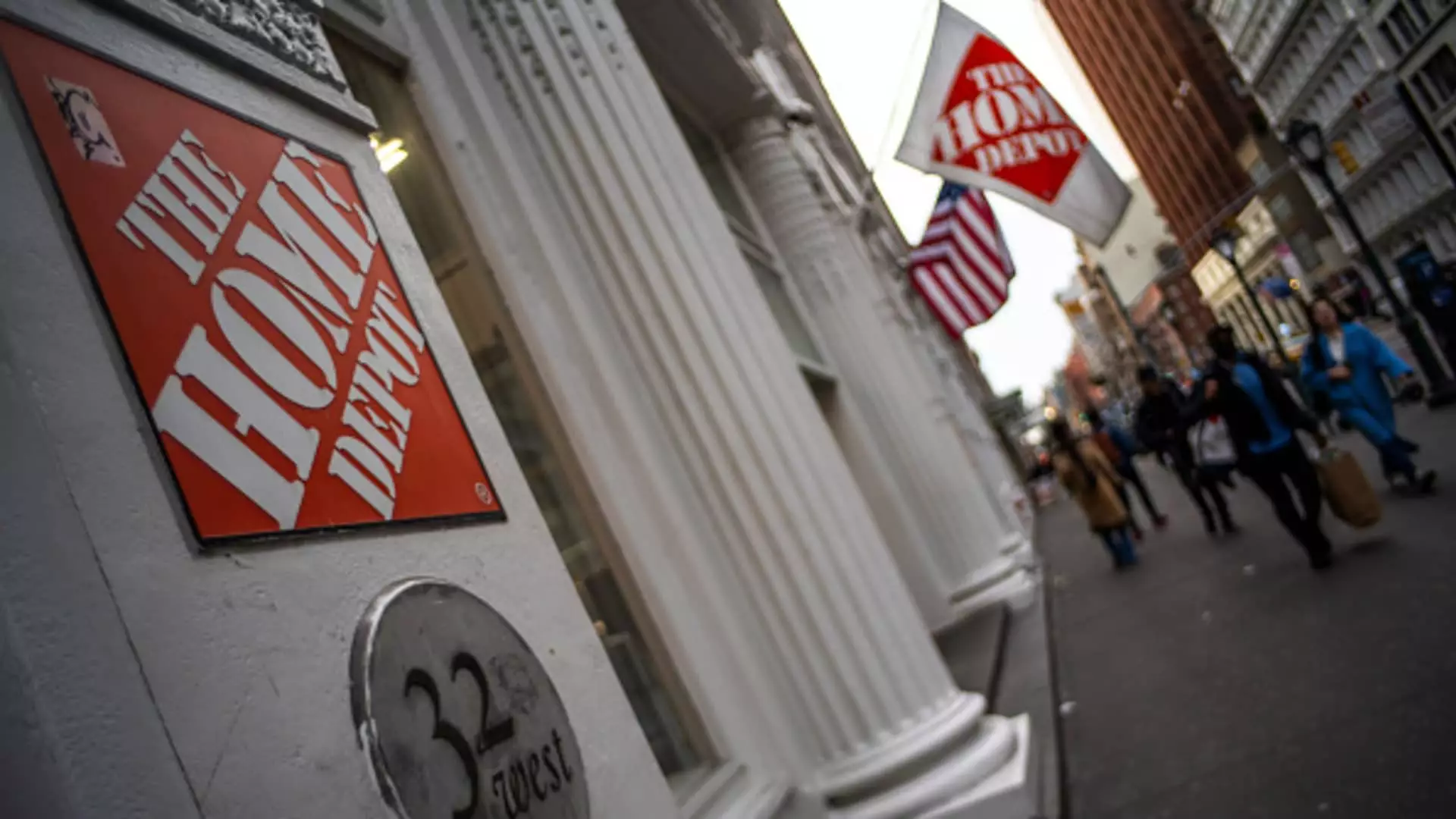In the ever-evolving landscape of home improvement and remodeling, a recent survey has brought to light some intriguing sentiments from contractors that point toward a potentially optimistic outlook for Home Depot. Conducted by Morgan Stanley, this poll of general contractors, painters, and remodelers reveals a common thread: a belief in business resilience and a rebound in demand for larger-scale projects. This perspective runs counter to the pervasive anxiety seen in various sectors of the economy. For those of us in the political sphere leaning towards center-wing liberalism, it’s essential to extract the underlying implications of such optimism while recognizing the challenges that loom over this industry.
Contractors from across the board are expressing confidence, especially regarding the stability they foresee within their operations. This sentiment emanates from a healthy backlog of projects that is expected to swell in the latter half of 2025. Analysts interpret this as a strong indication that many homeowners are willing to invest in their properties rather than opt for cheaper, smaller jobs. This preference to undertake substantive renovations rather than minor adjustments may reflect an underlying psychological shift that favors long-term investments in the face of uncertainty.
The Tariff Tension: A Cloud Overhead
However, beneath this hopeful exterior lies a significant concern: material pricing pressures fueled by inflation and tariffs. Contractors have voiced that these issues represent a pressing challenge for their businesses. In light of this, Morgan Stanley’s cautionary note on Home Depot’s stock price target—lowering it from $450 to $410—reflects an acknowledgment of the potential drag created by tariffs. This adjustment is particularly salient considering the survey’s timing right before the controversial “Liberation Day” announcement from the Trump administration, which echoed through the industry like a thunderstorm, with fears of heightened costs casting a long shadow.
As Home Depot maneuvers through this turbulence, it remains to be seen how effectively it can advocate for its customers. The company’s commitment to monitoring tariff impacts, as articulated in their recent statement to CNBC, is commendable, yet it speaks to a broader dilemma of how domestic businesses must operate amid policy-driven volatility. The political implications of such tariffs require a careful discussion about the interconnectedness of global supply chains and the real consequences for American businesses and consumers.
The Aging Home Phenomenon
In conjunction with these challenges is the reality of America’s aging housing stock. Home Depot’s CEO, Ted Decker, expressed his belief that more than half of U.S. homes are over 40 years old, necessitating significant upkeep and improvement. This reality not only presents an opportunity for growth but underscores a crucial narrative: homeownership continues to be a cornerstone of the American dream despite the economic uncertainties. For a business like Home Depot, this aging housing stock could lead to sustained business opportunities, as homeowners are compelled to invest more to maintain or increase property value.
This long-term vision is encouraging, particularly as economic indicators, such as the sustained low levels of 30-year fixed-rate mortgages, signal a stabilizing housing market that might catalyze invigorated sales for Home Depot. The idea that homeowners are retaining and enhancing their properties instead of fleeing toward cheaper options can invigorate the sector as a whole. In an environment where economic fluctuations create waves of concern, such insights drive home (pun intended!) the importance of investing in one’s property and community.
Professional Customers Take the Lead
Home Depot’s overarching growth strategy increasingly emphasizes serving professional customers, a pivot that appears to be bearing fruit. With the significant acquisition of SRS Distribution, the home improvement giant is positioning itself to garner a more significant share of the contractor and remodeler market. Recent data suggesting that pro sales outpaced do-it-yourself projects in the fourth quarter of 2024 reinforces this focus on professional clientele.
This dedication raises pertinent questions about the company’s long-term investment strategy in a volatile market. Are they best situated to capture a larger slice of the market simply by taking advantage of trends, or are they genuinely revolutionizing how contractors view their partnerships with suppliers? This nuance invites further exploration into Home Depot’s strategic vision and its effect on smaller players within the industry.
An Evolving Landscape
Overall, the sentiments expressed by contractors reveal a mixed bag of optimism mingled with serious concerns. The home improvement market is navigating through a uniquely precarious landscape characterized by external pressures like tariffs and inflation, yet also opportunities rooted in structural needs within the American housing stock. For investors, the call to remain “long on Home Depot” echoes a larger faith in the resilience of the sector, even as caution about macroeconomic factors lingers.
This complex interplay of confidence and concern showcases the inherent unpredictability of a market navigating political, economic, and social shifts. Understanding these dynamics is essential for any investor or stakeholder aiming to make informed decisions in an uncertain economy.

Leave a Reply